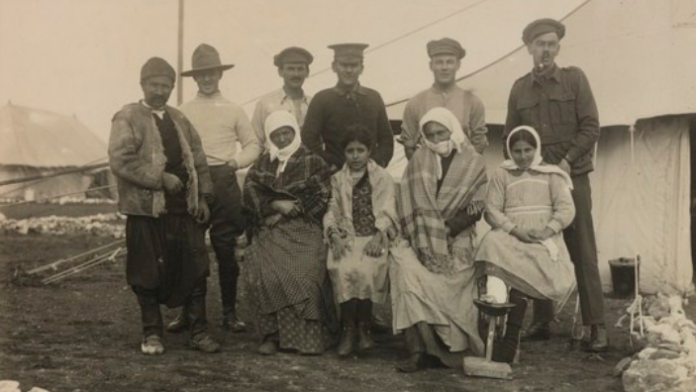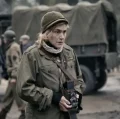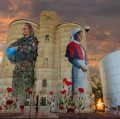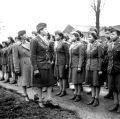The Lemnian Community of Victoria is proud to host an upcoming exhibition of photographs taken by soldiers, nurses and doctors during their time in Lemnos, prior to, during and post the Battle at Gallipoli. These photos are an incredible link to Australia’s Anzac story and are rarely shown in public.
An upcoming exhibition of photographs taken by nurses, doctors and soldiers during WW1 on the Greek island of Lemnos will be available on April 25, 2022 (which is, of course, one of the most sacred days in Australian history, Anzac Day). These photos were taken prior to the Battle at Gallipoli, during the battle when Lemnos was used as part of the ANZAC field hospital and post the battle. The Lemnos Gallipoli Commemorative Committee (LGCC) has graciously donated these photos to the The Lemnian Community of Victoria so they can be permanantly displayed in Braeside, Victoria. The organisation is located at 906 Springvale Road, Braeside.
Lemnian Community of Victoria President, Phillip Diamataris, said: “The gesture offered to our community by the Lemnos Gallipoli Commemorative Committee is extremely humbling. The photographs are a permanent mark in time capturing our brave soldiers and nurses as well as our Lemnian brothers and sisters going about their day to day duties, under the cloud of World War One,” Mr Diamataris said.

Local villagers attend the 3rd Australian General Hospital for medical treatment. Photographer AW Savage. State Library of NSW Collection.
“The honour to have these precious photos on display permanently at our facility allows our members, as well as the broader community, an opportunity to connect with history. A history that has connected Lemnos with Australia forever.
“We look forward to welcoming the Lemnos Gallipoli Commemorative Committee, Federal and State politicians, local council representatives, members of our community and other guests to witness this momentous occasion on a day that is very important to all Australians.”
The photographs were sourced from collections in war memorials, museums, libraries and universities from across Australia and elsewhere. They include photographs taken by the Australian photographers Sergeant Albert Savage, Major Laurence Herschel Harris and War Correspondent Phillip Schuler, as well the British photographer Lieutenant Ernest Brookes held in London, amongst many others.
Mr Claven said that this exhibition of high resolution images from 1915 is a great opportunity for the people to see with their eyes the depth of the connection between Lemnos and the Anzacs.
“Since I first saw these rarely published images I have been captivated by them and been eager to bring them to the attention of the public,” Mr Claven said.

Myrina Harbour, Lemnos 1915. Photographer Sergeant James Edmond McPhee. State Library of Victoria Collection.
He explained that the exhibition photographs show the Anzacs arriving on Lemnos in their transport ships, its great harbour of Mudros filled with Allied ships preparing for war, the troops practicing their landing techniques on Lemnos’ shores, the hospitals where Australia’s 130 nurses cared for the sick of the campaign, as well as the local villagers, the great Anzac camp at Sarpi and the graves of the 148 Australians and 76 New Zealanders who lie there.
Mr Claven said that one of the most fascinating aspects of the Lemnos Gallipoli photographic archive is the number of photographs revealing the inter-action between the local Lemnians and the Anzac soldiers and nurses.
“There are lots of images of Anzacs visiting local hora, of sitting in the local kafenio, enjoying the natural hot springs at Therma, viewing local churches and schools, and the natural beauty of the island,” Mr Claven said.
“Some of the most touching are those of Australians with local families. These reveal the first real links between Australians and Greeks in Greece.”
Mr Claven has also produced an exhibition booklet explaining the role of Lemnos and the story of the photographs. The booklet will be provided to all attendees as a momento of their attendance.
Committee President, Lee Tarlamis MP AO, urged people to attend the exhibition.
“All who attend the Exhibition will be amazed at the images displayed and go away from it better informed and appreciative of the Australian presence on Lemnos 100 years ago,” Mr Tarlamis said.
Source: The Greek Herald








